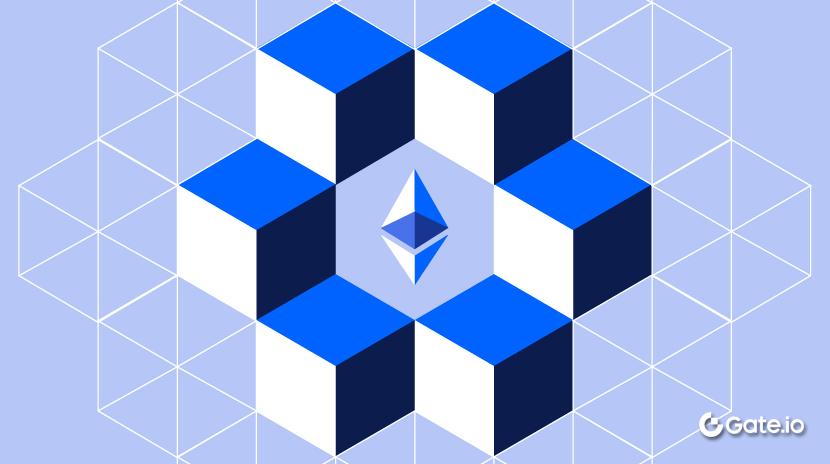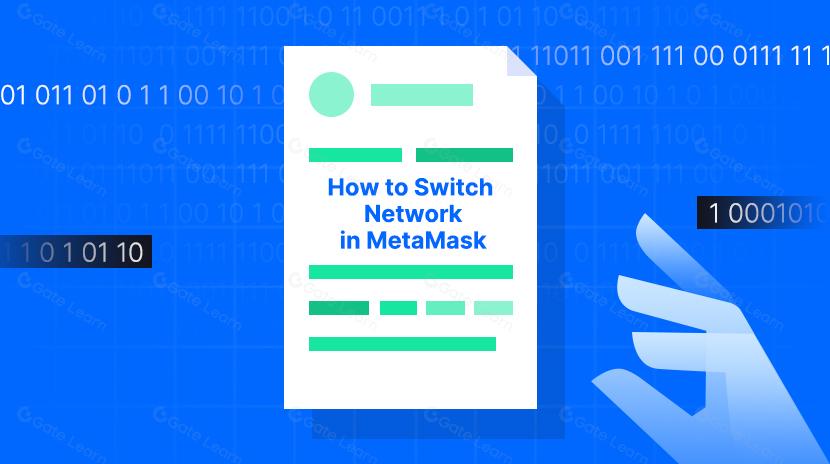Кризис среднего возраста Ethereum: почему инфляция токенов продолжается, несмотря на сжигание 7,3 миллиарда долларов
Введение
Ethereum, как ведущая в мире платформа для умных контрактов, представила механизм сжигания через EIP-1559 в попытке достижения дефляционных целей. Однако по состоянию на 13 апреля 2025 года исследования показывают, что его предложение все еще увеличивается на годовую ставку в 0.805%, добавляя 3,477,830.85 ETH, несмотря на сжигание 4,581,986.52 ETH. В этом отчете анализируется данный феномен с точки зрения исследований, исследуя исторический контекст, текущую динамику, влияющие факторы и перспективы на будущее.
Исторический контекст
В ходе Лондонского хардфорка был внедрен EIP-1559, изменяющий способ управления комиссиями за транзакции. Ранее все комиссии за транзакции выдавались в качестве вознаграждения майнерам; по новому механизму базовая комиссия сжигается, а оставшиеся "чаевые" распределяются среди валидаторов (ранее майнеров). Этот механизм направлен на противодействие инфляционному эффекту новой эмиссии ETH, в конечном итоге делая ETH дефляционным активом.
Слияние в сентябре 2022 года перевело Ethereum с PoW на PoS, что значительно снизило темп выпуска. До слияния майнеры получали около 13 000 ETH ежедневно; после слияния, при объеме стейкинга около 14 миллионов ETH, выпуск снизился до примерно 1 700 ETH в день. Это изменение заложило основу для дефляции, но фактическое воздействие механизма сжигания зависит от активности сети и уровня комиссий.
Текущая динамика предложения

С августа 2021 года было сожжено Ethereum (ETH) на сумму 7,3 миллиарда долларов. На 13 апреля 2025 года циркулирующее предложение Ethereum составляет приблизительно 120 690 000 ETH, с годовой темпом роста в 0,51%. С момента Лондонского хардфорка было сожжено 4 581 986,52 ETH, общим объемом около 7,3 миллиарда долларов (на основе исторических цен ETH). Однако чистое предложение увеличилось на 3 477 830,85 ETH, что указывает на то, что выпуск превысил количество сожженных токенов.
По сравнению с биткоином за тот же период (три года и восемь месяцев) его годовая инфляция в среднем составляла 1,517%, несмотря на то, что у биткоина установлен предел в 21 миллион монет, в то время как у Ethereum теоретически неограниченный запас.
Факторы, влияющие на баланс сжигания и выпуска
Следующие факторы влияют на баланс между сжиганием и выпуском:
Активность сети и комиссии за транзакции:
- Скорость сжигания прямо коррелирует с объемом транзакций и комиссиями. Периоды высокой активности (такие как бумы NFT или взлеты DeFi) могут привести к временной дефляции. Обновление Dencun 2024 года, представив прото-данкшардинг, снизило комиссии транзакций второго уровня и улучшило пользовательский опыт, но также уменьшило скорость сжигания. Например, Dencun снизил затраты на транзакции на решениях второго уровня (например, Optimism, Arbitrum), косвенно снизив сжигание на основной цепи.
Скорость выпуска:
- После слияния скорость выпуска зависит от наград за стейкинг, примерно 1 700 ETH ежедневно или около 620 500 ETH ежегодно (при стабильном участии в стейкинге). Хотя это значительное снижение по сравнению с до-слиянием (13 000 ETH в день), текущая скорость сжигания все еще недостаточна для компенсации ее в периоды низкой активности.
Основные участники сжигания:
Данные показывают, что основными источниками сжигания являются:

Эти платформы обеспечивают большое количество транзакций, но уровень активности зависит от рыночных условий, таких как колебания в трендах NFT и использование DeFi.
Рыночные условия:
- Периоды повышенной активности могут привести к временной дефляции, в то время как периоды низкой активности (например, во втором квартале 2024 года, когда произошло увеличение на 75 301 ETH) приводят к инфляции. Данные за второй квартал 2024 года показывают выпуск в размере 228 543 ETH, сжигание 107 725 ETH и чистый прирост 120 818 ETH.
Анализ Продолжающихся Инфляционных Тенденций
Будущая динамика предложения Ethereum может быть повлияна следующими факторами:
Ловушка ожиданий в технологической эволюции
Ограничения дизайна механизма EIP-1559:
Хотя механизм сжигания создает новый парадигму захвата ценности путем сжигания базовых комиссий, его эффективность ограничена нелинейными флуктуациями сетевой активности. Данные показывают, что после обновления Dencun в 2024 году транзакции Layer 2 составили более 83%, что привело к снижению дохода от ежедневной комиссии за газ на главной сети на 72%.
Проблемы внедрения технологии шардинга
Обновление фрагментации Pectra, изначально запланированное на первый квартал 2025 года, было отложено из-за проблем с совместимостью ZK-Rollup. В результате количество транзакций в секунду (TPS) остается в диапазоне от 15 до 45, что недостаточно для поддержки сценариев высокочастотной торговли.
"Дренаж ценности" в экологической конкуренции
Мульти-цепная экосистема и расхождение ценности:
Солана, с ее 9 000 TPS и стоимостью транзакции в $0,0001, захватила 38% рыночной доли общественных цепочек в 2024 году. Ежедневное количество активных пользователей достигло 2 миллионов, что в 5,6 раза превышает ежедневное количество активных пользователей основной сети Ethereum.
Структурный спад DeFi и NFT:
Продажи NFT на цепи Ethereum упали с пика в $1.23 миллиарда в месяц в 2023 году до всего лишь $125 миллионов в 2025 году. Кроме того, после полного перехода Uniswap v4 на Layer 2 торговый объем DEX на основной сети снизился до менее 9%. Ситуация еще более тяжела в секторе RWA (Real World Asset), где институты, такие как BlackRock, выбрали выпуск токенизированных фондов на Polygon, вызвав упущение Ethereum триллионного рыночного входа.
Парадокс рефлексивности в экономических моделях
Дисбаланс в инцентивах механизма стейкинга
3.2% доходность стейкинга, разработанная после слияния, потеряла свою привлекательность в макроэкономической среде, где базовая процентная ставка Федеральной резервной системы составляет 5.25%. В результате количество узлов валидаторов уменьшилось с 3.495 миллиона до 3.4 миллиона, а уровень стейкинга снизился до 27%.
Ассиметричный эффект механизма сжигания
Моделирование данных показывает, что для того, чтобы Ethereum был дефляционным, скорость сжигания должна превышать скорость выпуска (приблизительно 1 600 ETH в день). Однако во время спада рынка количество активных сетевых адресов снижается до 360 000 в день, и ежедневная скорость сжигания может поддерживать только около 800 ETH.
Структурное подавление регуляторной среды
Тень классификации ценных бумаг
Комиссия по ценным бумагам и биржам (SEC) классифицировала 75% токенов ERC-20 как ценные бумаги и запретила участие ETF на ETH в стейкинге, что прямо привело к снижению институциональных притоков на 22% год к году. В то же время биткоин, с его ясной позицией как «цифрового золота», привлек $30 миллиардов инвестиций в ETF, увеличивая разрыв в регуляторном арбитраже и вызывая падение обменного курса ETH/BTC до исторического минимума в 0.02.
Передача затрат на соблюдение
Для выполнения требований KYC/AML расход газа умного контракта увеличился на 27% из-за модификаций в соответствии, таких как абстрагирование учетной записи, дальнейшее подавление сетевой активности.
Заключение: Среднекризисный период Ethereum
Дилемма дефляции Ethereum в основном представляет собой микрокосм столкновения между технологическим идеализмом и коммерческим реализмом. Поскольку доля рынка ETH остается на исторически низком уровне в 17,5%, это отражает не только дисбаланс в денежной политике, но и болезни всей отрасли, переходящей от «доказательства концепции» к «созданию ценности». Будущее решение может быть не в механическом стремлении к дефляционной модели, а в создании новой парадигмы, которая балансирует эффективность, справедливость и устойчивость к регулированию. Точно так же, как Сатоши Накамото не предвидел фурора с ETF при создании Bitcoin, открытие ценности Ethereum потребует освобождения от существующих рамок и нахождения динамического баланса между технологическими идеалами и реальностями рынка.
Отказ от ответственности:
Эта статья взята из [ MarsBit], и авторские права принадлежат оригинальному автору [Лоуренс, Mars Finance]. Если у вас есть возражения к перепечатке, пожалуйста, свяжитесь с Gate Learnкоманда, и команда обработает это как можно скорее в соответствии с соответствующими процедурами.
Отказ от ответственности: Взгляды и мнения, выраженные в этой статье, представляют собой только личные взгляды автора и не являются инвестиционным советом.
Другие языковые версии статьи переведены командой Gate Learn. Переведенная статья не может быть скопирована, распространена или использована без упоминания Gate.com.
Похожие статьи

Что такое Нейро? Все, что вам нужно знать о NEIROETH в 2025 году

Лучшие криптовалютные лотерейные платформы на 2024 год

Как сделать ставку на ETH?

Руководство по переключению сети в MetaMask

Что такое обернутый Ethereum (WETH)?


